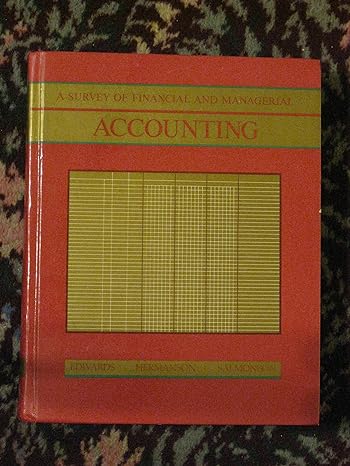Question
Prepare the period's financial statements and calculate the following primary financial ratio: Debt Ratio Total Liabilities / Total Assets Current Ratio Current Assets / Current
Prepare the period's financial statements and calculate the following primary financial ratio:
| Debt Ratio Total Liabilities / Total Assets |
| Current Ratio Current Assets / Current Liabilities |
| Working Capital Current Assets - Current Liabilities |
| Assets-to-Equity Ratio Total Assets / Owner's Equity |
| Debt-to-Equity Ratio Total Liabilities / Owner's Equity |
Nelson Adams and Marina Fedorova started Local Souvenir Inc., on January 1. They were two owners of the corporation. They decided to produce food and drink containers in a birch bark crafts technique that have been popular in Russia since ancient times. The water-resistant and robust bark could be cut, bent, sewn and painted. They hired three workers who made all bark crafts operations and one artist who made decorations. Also, one girl helped the crafters twice a week to perform small work related to the internet promotion of the brand and bill customers. Accounting services and cleaning services were outsourced.
The following transactions all took place in January.
On January 1, Nelson Adams and Marina Fedorova invested $2,500 each in the business as owners. On January 1, the firm paid $750 rent from January 1 through January 31.
The firm borrowed $4,000 from a bank on a 9 per cent note payable, with interest payable quarterly and the principal due in full at the end of two years.
Equipment costing $7,200 was purchased for cash (a sewing machine $5,000 and a drying box $2,200). The expected life of the machines was ten years.
An initial inventory of birch bark, paints and paper boxes was purchased on credit for $800, including: bark $500,
paints $200,
boxes $100.
During the month an additional $5,750 of ingredients and boxes was purchased on credit, including:
bark $5,000, paints $500, boxes $250.
On January 12, the firm organized a workshop for a fee of $200. Because the customer was a friend of Nelson's, the customer was told that payment could be made some time later in the month.
Placed $6,000 of raw materials into production in the process of making goods, including: bark $5,200,
paints $500,
boxes $300.
In January containers were produced and stored in the studio:
Week 1 = 40 containers Week 2 = 60 containers Week 3 = 70 containers Week 4 = 80 containers
In January containers sales were $12,000, all for cash: Week 1 = 40 containers
Week 2 = 55 containers Week 3 = 60 containers Week 4 = 85 containers
On January 29, a check was received from Nelson's friend for the party of January 12.
During January, the firm employees were paid in wages (simplified as we are disregarding certain real- world complications such as payroll taxes), including:
$2100 to bark crafts operators (they work 40 hours a week each), $800 to the artist (she's working 30 hours a week),
$100 to the part-time employee who performed small work in the studio (paid for 20 hours a week).
At the end of the month, bills for various utilities used in January were received, totalling $350 (assuming that a non-manufacturing use of those utilities is insufficient).
At the end of the month, a bill for accounting services used in January was received, totalling $80.
At the end of the month, a bill for studio cleaning services used in January was received, totalling $20. During the month, $4,800 of accounts payable was paid.
TOTAL ASSETS $ 13 496.00
Net Income $ 1 812
Working Capital $ 3 702.00
Step by Step Solution
There are 3 Steps involved in it
Step: 1

Get Instant Access to Expert-Tailored Solutions
See step-by-step solutions with expert insights and AI powered tools for academic success
Step: 2

Step: 3

Ace Your Homework with AI
Get the answers you need in no time with our AI-driven, step-by-step assistance
Get Started


